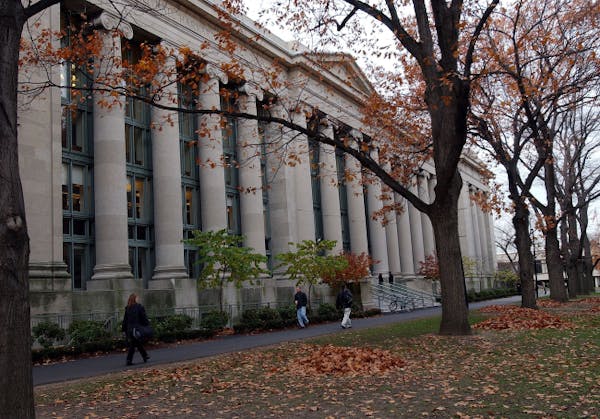For the second time in a decade, America's highest court is considering a controversial affirmative-action case. Once again, a white student is challenging the consideration of race in college admissions as a violation of the Constitution's equal-protection guarantee.
This challenge, like similar ones before it, should be evaluated with an eye toward the goals of affirmative action and the nation's still-incomplete efforts to achieve equity on race, gender and other fronts.
Given that those goals have not been met, the Supreme Court should continue to allow race as one admissions factor -- though never the only one -- to help colleges build diverse student bodies. When institutions of higher learning better reflect the racial makeup of the society around them, students of all races and society in general reap big benefits.
The pending case was brought by Abigail Fisher, now 22, who alleges that she was denied entry to her first choice of colleges, the University of Texas, because she is white. She claims that the Texas policy of admitting about 25 percent of its freshman class based on "holistic" standards that include race prevented her admission to the 2008 freshman class. Fisher instead attended Louisiana State University and graduated last May.
At issue is whether UT's admission policy unfairly discriminates against whites.
"Acting affirmatively" in college admissions, employment, government contracts and housing was adopted into law to correct historic (and sometimes official) discrimination. Though progress has been made, most studies show that minorities and women remain underrepresented in many areas. It is still necessary to make special efforts.
Why? Because our increasingly diverse world demands it. As Justice Lewis Powell wrote in 1978, America's future depends on exposing prospective leaders "to ideas and mores of students as diverse as this nation of many peoples."
The fastest-growing populations in the United States are people of color: What economic future will America have if those groups are persistently undereducated and underemployed?
In a 2003 University of Michigan Law School admissions case, the Supreme Court rightly upheld the use of race as a factor in admission. However, the court also said that affirmative-action measures should be temporary, signaling that the time will come when they will be unnecessary.
We look forward with hope to that happy day, but the nation is not there yet. Disparities in pay, in access to opportunity and in economic advancements demonstrate that point. It's valuable to note that some other developed nations require quotas to ensure that women, for example, will be represented in government to better reflect their populations.
Fisher is unable to demonstrate ongoing harm caused by UT's decision not to admit her. Like many thousands of students who do not get into their first choice school, she still graduated from college. She was not denied access to state-supported education, as many students of color were historically.
The high court heard arguments this week; several of the justices' questions aggressively pushed back against the affirmative-action concept. A decision is expected sometime next year, when we hope the justices will retain the spirit of previous decisions and keep race among the factors that may be considered in admissions decisions.
------------------------------
The Opinion section is launching a newsletter this fall. Please sign up here.
Ukraine aid vote is a domestic and geopolitical inflection point



